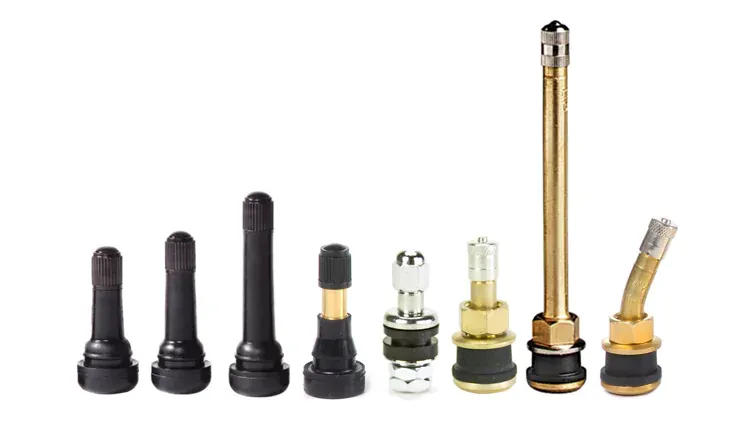Tire Valve
A tire valve or tire valve stem is a critical component of a tire wheel assembly, allowing for the inflation and deflation of tires. It ensures that air does not escape from the tire under normal conditions, maintaining the correct tire pressure for safe and efficient vehicle operation. The valve stem is usually made of metal or rubber and is located on the rim of the tire. It consists of a body, a core, a cap, and a valve mechanism that opens to admit air and closes to prevent air from escaping. Let us look into the types of tire valves, learn why tire valve is important, what key features to consider when buying one, and how to use it.
Tire Valve Types
There are several types of tire valve stems, each suited to different types of vehicles, tire designs, and usage scenarios:
- Schrader Valves: Commonly used in cars and bicycles, Schrader valves are wider and shorter than other types. They are known for their simplicity and durability.
- Presta Valves: Often found on high-performance bicycles, Presta valves are slimmer and longer than Schrader valves. They have a locking nut at the top to prevent air leakage.
- Dunlop (or Woods) Valves: Predominantly used in Europe and Asia on bicycles, Dunlop valves are a hybrid between Schrader and Presta valves in terms of design and functionality.
- High-Pressure Snap-In Valves: Designed for high-speed vehicles, these valves can withstand high pressure and are typically used in racing cars and heavy vehicles.
- Tubeless Valves: Specifically designed for tubeless tires, these valves are built to ensure an airtight seal at the rim and are crucial for the performance of tubeless tire systems.

Importance of Tire Valve
Tire valve stems play a vital role in maintaining tire health and vehicle safety:
- Pressure Maintenance: They keep the tires inflated at the correct pressure, which is essential for optimal tire performance and longevity.
- Safety: Properly inflated tires provide better handling, reduce the risk of tire failure, and can improve fuel efficiency.
- Convenience: They allow for easy adjustments of tire pressure, enabling drivers to adapt to different driving conditions.
What to Consider When Choosing a Tire Valve
When selecting a tire valve stem, consider the following factors:
- Compatibility: Ensure the valve stem is compatible with your tire type and wheel rim.
- Material: Metal stems are more durable and resistant to damage, while rubber stems are more flexible and easier to install.
- Valve Type: Choose between Schrader, Presta, or another type based on your vehicle's requirements and your personal preference.
- Pressure Ratings: Make sure the valve stem can withstand the tire's maximum air pressure, especially important for high-performance or heavy vehicles.
- Quality: Opt for high-quality, durable valve stems from reputable manufacturers to ensure reliability and safety.
Buy quality tire valves on Amazon and eBay.
How to Use a Tire Valve
Using a tire valve stem correctly is straightforward but essential for tire maintenance:
- Checking Tire Pressure: Remove the cap from the valve stem, press the tire gauge onto the stem, and read the pressure. Compare this to the recommended pressure for your tires.
- Inflating Tires: Attach an air hose to the valve stem and fill the tire to the recommended pressure. Use a tire gauge to confirm the pressure level.
- Deflating Tires: Press down on the valve core to release air if you need to lower the tire pressure. Monitor the pressure with a gauge until it reaches the desired level.
- Maintenance: Regularly inspect the valve stem for signs of damage or wear and replace it if necessary. Always ensure the cap is securely fastened to keep out dirt and moisture.
Tire valve stems are a small but crucial component of tire maintenance, impacting vehicle performance, safety, and efficiency. Understanding the different types of valve stems, their importance, and how to choose and use them properly can help ensure your vehicle operates safely and efficiently. Regular checks and maintenance of your tire valve stems, along with your tires, should be part of your routine vehicle maintenance schedule.
All listed guides, data and/or calculations are for informational purposes only. TirePressure.com does not warrant or make any representations regarding the accuracy of or the results of the use of this information.